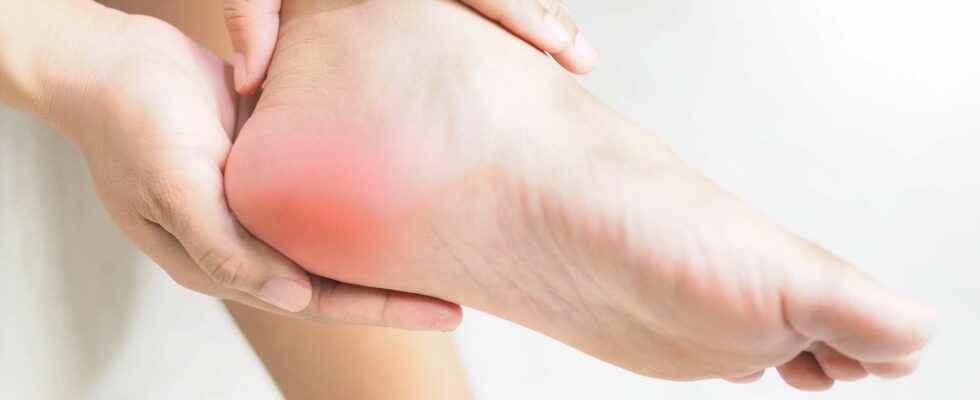Sever’s disease is an inflammation of the growth plate of the heel (calcaneus). It occurs in children, usually between 7 and 10 years old. When bones grow faster than tendons and ligaments lengthen, cartilage fragmentation ensues with micro-fractures accompanied by inflammation at the insertion of the Achilles tendon on the heel bone. Sever’s disease is generally the result of sustained growth combined with intense sporting activity putting strong tension on the Achilles tendons (athletics, gymnastics, tennis, football, etc.). It can also be due to malformation of the feet, weight gain, bad posture or wearing inadequate footwear.
Sever’s disease: symptoms
The disease is manifested by pain in the calcaneus, the heel bone, until you can no longer put your foot on the ground. This forces the child to limp or walk on tiptoe. Heels may be swollen and red.
Sever’s disease: course and treatment
The treatment of Sever’s disease is essentially based on rest: the child must interrupt his sports activities for at least one month, with exemption from activity physical in the school. The total disappearance of the pain is variable and it is sometimes necessary to stop the activity until the end of the growth (around 16 years). Some sports that do not require heel support such as swimming or cycling may be allowed. orthopedic insoles or heel pads hydro gel reduce the impact of the heel on the ground and prevent over-inflammation. In the acute phase, anti-inflammatories or some painkillers are prescribed to relieve pain.
You will also be interested
Interested in what you just read?
